Picture a gigantic painting with different colors representing different ecosystems. That’s what North America is like, a vast land with all kinds of natural habitats. In this article, we’ll take a colorful journey through these biomes, from the icy blue of the tundra to the fiery red of the desert. Each one is like a unique piece of art, a story of how climate, plants, and animals all work together. So, let’s dive into the vibrant world of North American biomes!
## Unveiling North America’s Colorful Biomes
Let’s take a trip across the diverse landscapes of North America, exploring the unique colors that paint each biome and hint at the fascinating life they hold.
### Tundra: A Frozen Rainbow
Imagine a land where winter reigns supreme, cloaking the ground in ice and snow. This is the tundra, a place where the cold might fool you into thinking it’s lifeless. But then, a short, sweet summer arrives. Suddenly, the tundra bursts into a vibrant display of life and color! Think emerald green mosses carpeting the ground, golden lichens adding splashes of sunshine, and resilient wildflowers bravely showing off their bright hues. This surprising burst of color is a testament to the tundra’s ability to thrive even in the harshest conditions.
### Desert: Subtle Hues in a Harsh Land
The desert: a place of extremes. We often picture scorching sun, endless sand dunes, and towering rock formations. And while those are definitely part of the story, the desert’s beauty goes beyond its starkness. Look closer, and you’ll discover a surprising array of colors. Cacti and succulents, masters of survival in this arid environment, dot the landscape with their muted greens and purples. As the sun begins its descent, it paints the sky in fiery oranges and reds, casting a warm glow over the rugged terrain, revealing the hidden beauty of this challenging environment.
### Grassland: A Sea of Green and Gold
Picture a vast expanse of land, stretching as far as the eye can see. This is the grassland, a place where the wind whispers through a sea of grasses, transforming the landscape into a mesmerizing tapestry of emerald green and golden hues. But the grassland’s palette isn’t static. It shifts and changes with the seasons, embracing fiery reds and oranges in the fall and welcoming spring with a fresh coat of vibrant green.
### Coniferous Forest: An Evergreen Symphony
Step into a coniferous forest, and you’ll instantly feel a sense of tranquility. These forests are dominated by towering evergreen trees – think pines, firs, and spruces – their needles creating a dense canopy overhead. This canopy absorbs most of the sunlight, casting long, dancing shadows on the forest floor and shrouding the understory in an ethereal, emerald light.
### Deciduous Forest: A Seasonal Spectacle
The deciduous forest is a true master of transformation. Throughout spring and summer, a vibrant canopy of green leaves soaks up the sun’s energy. Then, as autumn approaches, the forest puts on a breathtaking display of color. The leaves of maple, oak, and birch trees transform into a kaleidoscope of fiery reds, golden yellows, and deep oranges before gently falling to the ground, blanketing the forest floor in a mosaic of warm hues.
### Rainforest: An Explosion of Green
Imagine stepping into a world where green reigns supreme. This is the rainforest, a place where life flourishes in a symphony of verdant hues. Towering trees, giant ferns, and exotic flowers in every imaginable shade of green, from deep emerald to vibrant jade, create a dazzling spectacle. The sheer abundance and diversity of plant life in the rainforest are a testament to the incredible power of nature’s palette.
Exploring the colors of North America’s biomes reminds us of the incredible diversity of our planet. Each hue tells a story of adaptation, resilience, and the delicate balance that sustains life in these incredible ecosystems.
## What Defines North America’s 7 Biomes?
Hold onto your hats, folks, because we’re about to dive into the incredible diversity of North America’s seven biomes! We’ve already gotten a glimpse of the continent’s natural wonders, but now it’s time to explore each unique environment in more detail. From the frosty landscapes of the Arctic to the sun-drenched deserts of the southwest, prepare to be amazed by the sheer variety of life that flourishes across this vast land.
### 1. Tundra: Where Winter Never Truly Ends
Imagine a place where the ground stays frozen solid for most of the year, a vast expanse of icy plains and rocky hills. This is the tundra, a land of extremes where only the toughest plants and animals can survive. During the short summer, the top layer of soil thaws just enough for mosses, lichens, and small wildflowers to burst into bloom, painting the landscape in a mosaic of vibrant colors.
This harsh environment is home to creatures like caribou, musk oxen, and arctic foxes, who have adapted to the freezing temperatures and limited resources. The tundra might seem desolate at first glance, but it plays a crucial role in regulating Earth’s climate.
### 2. Boreal Forest: The Evergreen Empire
Moving south from the tundra, we encounter the boreal forest, a vast expanse of coniferous trees stretching across the continent. Think towering pines, majestic spruces, and fragrant firs, their dark green needles a stark contrast against the snowy ground in winter. This is a land of long, cold winters and short, cool summers.
The boreal forest is a haven for wildlife, from lumbering moose and elusive lynx to a variety of songbirds. It’s also a vital carbon sink, absorbing massive amounts of carbon dioxide from the atmosphere and helping to mitigate climate change.
### 3. Temperate Deciduous Forest: A Symphony of Seasons
Further south, we enter the realm of the temperate deciduous forest, where the changing seasons paint the landscape in a breathtaking array of colors. Think vibrant greens in spring, lush canopies in summer, fiery reds and oranges in autumn, and bare branches dusted with snow in winter.
These forests are home to a rich diversity of trees like oak, maple, beech, and hickory, which lose their leaves each fall. This seasonal change creates a dynamic ecosystem teeming with life, from white-tailed deer and black bears to a kaleidoscope of insects and birds.
### 4. Grassland: The Sea of Green (and Gold!)
Next, we journey westward into the heartland of North America, where vast grasslands stretch as far as the eye can see. Picture a sea of waving grasses, rippling in the wind like emerald waves. These prairies are a haven for grazing animals like bison and pronghorn, as well as predators like coyotes and eagles.
As summer transitions into autumn, the grasslands transform into a sea of gold, with the dying grasses creating a stunning spectacle. While often overlooked, grasslands play a vital role in carbon storage and provide critical habitat for a wide range of species.
### 5. Desert: Where Life Finds a Way
Prepare for the extremes of heat and aridity as we venture into North America’s deserts. Picture scorching sun, sparse vegetation, and an unforgiving environment. But don’t be fooled by the seemingly barren landscape – life finds a way to thrive even here. Cacti and succulents stand tall, their prickly exteriors hiding a surprising ability to store water.
Nocturnal animals like kangaroo rats and desert foxes emerge under the cool cover of darkness, while reptiles like rattlesnakes and Gila monsters have adapted to survive in this challenging environment. Deserts might seem harsh, but they are intricate ecosystems with a unique beauty all their own.
### 6. Coastal: Where Land Meets Sea
Our journey takes us to the edges of the continent, where the land meets the sea. Imagine the salty tang of the air, the sound of crashing waves, and the sight of diverse ecosystems thriving in this dynamic environment. Coastal areas encompass a range of habitats, from sandy beaches and rocky shores to salt marshes and estuaries.
These areas are teeming with life, from seabirds and shorebirds to marine mammals like seals and whales. Coastal regions are vital for biodiversity, providing critical breeding grounds and nurseries for countless species.
### 7. Mountain: Reaching for the Sky
Finally, we ascend to the heights of North America’s mountain ranges, where the air is thin and the views are breathtaking. Imagine towering peaks, rugged slopes, and a dramatic change in vegetation as we climb higher. From the lush forests at lower elevations to the alpine meadows and rocky summits above the treeline, mountains are a tapestry of diverse ecosystems.
They are home to sure-footed creatures like mountain goats and bighorn sheep, as well as predators like mountain lions and bears. Mountains play a crucial role in regulating water cycles and providing habitat for a wide range of plants and animals.
## America’s Trifecta: The 3 Major US Biomes
Let’s dive into the incredible variety of landscapes across the United States! While we often talk about different regions, like the Northeast or the Southwest, another way to understand these areas is by looking at their biomes. These are large-scale ecosystems characterized by similar climate, plants, and animals. Think of it like Mother Nature’s way of organizing different parts of the world! Now, let’s explore three major biomes that dominate the U.S. landscape.
### 1. Grasslands: America’s Breadbasket
First up, we have the **grasslands**, often referred to as prairies. Picture this: rolling hills that seem to stretch forever, covered in a sea of grasses swaying in the wind. You won’t find many trees here, but what you will find are incredible animals like bison (those massive, majestic creatures) and pronghorn (known for their incredible speed). These wide-open spaces are vital for grazing animals and support a unique ecosystem.
### 2. Forests: From Coast to Coast
Next, we journey into the **forests**, which cover a significant portion of both the eastern and western United States. Now, not all forests are created equal. Some, like those in the East, are primarily deciduous, meaning their trees lose their leaves in a spectacular display of color each fall. Others, like many in the West, are dominated by coniferous trees, which stay green year-round with those iconic needles. This difference in tree types is largely due to variations in climate and rainfall across the country. Forests are incredibly important for biodiversity, providing homes for a wide array of creatures, from graceful deer and powerful bears to wise owls and countless insects.
### 3. Deserts: A Land of Extremes
Finally, we venture into the dramatic landscapes of the **deserts**. Here, rainfall is a precious commodity, and temperatures can soar. But don’t let the harsh conditions fool you; deserts are teeming with life that has adapted to thrive in this challenging environment. You’ll find resilient plants like cacti with their prickly armor and succulents that store water to survive long periods of drought. The animal life is equally fascinating, with reptiles like lizards and snakes, along with nocturnal mammals that come out under the cool desert night sky.
These three biomes represent just a glimpse into the diverse landscapes that make the United States so remarkable. Each biome plays a crucial role in the overall health of our planet, reminding us of the interconnectedness of nature and the importance of protecting these valuable ecosystems.
## Central North America: A Biome Tapestry
Picture this: you’re cruising through the heartland of North America. You might think it’s all just endless fields of corn, but the truth is, Central North America is like a giant patchwork quilt of different landscapes, each with its own unique personality – these patches are what we call biomes.
### A Closer Look at the Tapestry
The Great Plains, with their iconic waving grasses, are a major player in the central region, stretching out like an emerald sea. But as you journey east and southeast, get ready for a dramatic change of scenery. Deciduous forests, with their vibrant leaves that burst into a kaleidoscope of colors each autumn, take center stage. And down south, towards the southwestern United States and into northern Mexico, a whole different vibe takes over – the arid landscapes of the deserts. These deserts aren’t barren wastelands though; they’re teeming with life, with plants and animals that have adapted to the challenges of limited water.
This mix of biomes in Central North America is pretty amazing. Think about it: the Great Plains’ grasslands transform from lush green to fiery gold as the seasons change. The deciduous forests teem with an incredible variety of plants and animals, all finding shelter and sustenance beneath the leafy canopy. And then there are the deserts, where life finds a way to thrive despite the dry conditions. It’s a testament to nature’s creativity and resilience.
### What Shapes These Biomes?
You might be wondering why these biomes exist where they do. It’s not random, that’s for sure. It’s all about a delicate dance between factors like latitude, elevation, and rainfall.
Latitude – how far north or south a location is – is a major influencer. As you head north, things get colder, and the amount of rainfall changes, which in turn dictates what types of plants and animals can survive there. Elevation plays a role too, creating microclimates. Think of it like this: climb a mountain, and you’ll notice the temperature drops and the landscape changes, even though you haven’t traveled very far geographically.
And then there’s rainfall, the lifeblood of any ecosystem. The amount of rainfall a region receives is a key factor in determining which biome can take root. Understanding these factors helps us appreciate the intricate web of life on Earth and the importance of keeping those delicate balances intact.
**Key Points:**
* **Tundra:**
* Vibrant burst of color during summer, including emerald green mosses, golden lichens, and wildflowers
* **Desert:**
* Muted greens and purples of cacti and succulents
* Fiery oranges and reds in the sky at sunset
* **Grassland:**
* Sea of emerald green and golden grasses
* Shifts to fiery reds and oranges in fall
* **Coniferous Forest:**
* Evergreen trees create a dense canopy, casting emerald light on the forest floor
* **Deciduous Forest:**
* Seasonal transformation from green in spring/summer to a kaleidoscope of colors in autumn
* **Rainforest:**
* Explosion of green hues, from deep emerald to vibrant jade
Discover the diverse biomes of North America with our interactive map coloring activity. [north america biome map coloring answers](https://www.lolaapp.com/north-america-biome-map-coloring-answers)
- Discover Trasa Robertson Cobern’s Mentors: Shaping Her Hurst Campaign - July 9, 2025
- Discover People Influenced by Trasa Cobern: A Legacy of Service - July 9, 2025
- Discover Trasa Cobern’s Nonprofit Impact: A Deep Dive - July 7, 2025

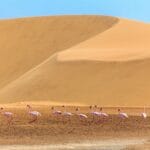
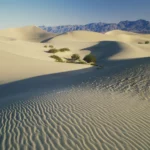
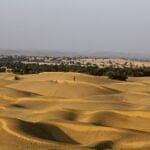
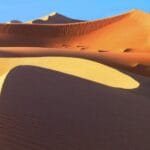
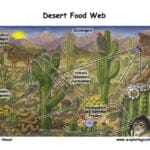
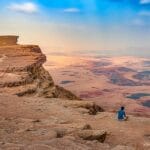










1 thought on “Across the Spectrum: Unveiling the Colors of North American Biomes”
Comments are closed.